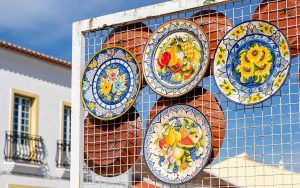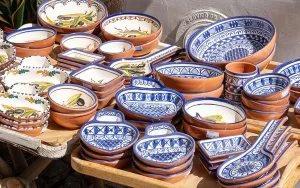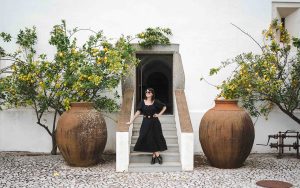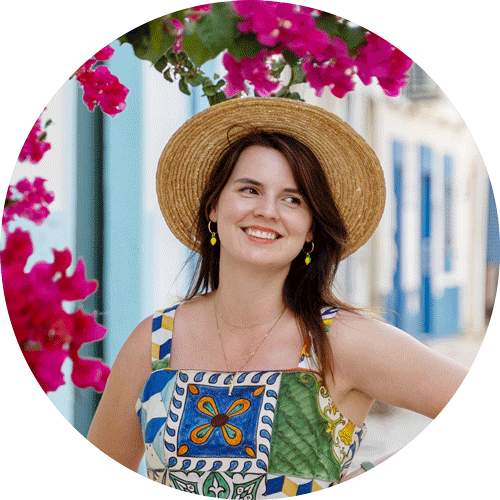History doesn’t have to be something you experience only in textbooks. In Évora you can touch, taste, and experience the marks left by ancient civilisations. From the remains of a Roman temple to the grandeur of its medieval cathedral, the capital of Portugal’s relaxed Alentejo region is a living, breathing museum of the country’s storied past.
Évora’s UNESCO-listed – and very walkable – historic centre is encircled by medieval walls that wrap the city’s top sights and 2,000-plus years of history. Within these boundaries find a labyrinth of squares, parks, churches and alleyways ripe for exploring. Beyond museums and monuments, there are loads of things to do in Évora, the heart of the Alentejo, a land of cork trees, olive groves, and vineyards.
Underrated Évora is a city on the rise again – and it has been picked as the European “Capital of Culture” for 2027. Between now and then expect more creativity, exhibitions, and events that will make this ancient whitewashed city an exciting place to visit. Here’s a complete guide to the best things to do in Évora.
Contents
ToggleWhere is Évora, Portugal?
Évora lies around a 90-minute drive, coach or train ride east of Lisbon. That puts the small historic city within easy reach of the Portuguese capital. While it’s not really on the way to anywhere, if you have the time, I suggest an overnight detour via Évora on your way to the Algarve, or you could venture inland to Évora before turning north to Porto.

Can you take a day trip from Lisbon to Évora?
Yes, you can zip out and back in a day – it is only a 90-minute drive. There are half-a-dozen direct trains between Évora and Lisbon each day.
But honestly, I think there are too many things to do in Évora to squeeze into just a few hours. If you only want to see the top historic sights, you could do Évora in one day. But if you’re that short on time, I’d suggest doing this with a small-group tour – your guide and driver will zip you around to the best spots and include special experiences and stories.
If you’re like me and you travel for food, or to relax and slow down – then you’ll want to experience the city at the intended Alentejo pace. Slowly! Staying more than one also gives you time to go beyond the city too. You can take day trips to explore small, charming Alentejo towns like Monsaraz, Arraiolos, Corval or Estremoz, which offer even more things to do.
Want help planning your trip to Evora? ✨ Book a one-on-one video call with Daniela and get custom help organising your perfect Portugal itinerary. Find out more here.

Top things to see and do in Évora, Portugal
Step inside Évora’s Chapel of Bones


“Nós ossos que aqui estamos, pelos vossos esperamos”
“We bones that are here, for yours we wait” – reads the sign above the chapel door, making each visitor to Évora’s Chapel of Bones reflect on their own mortality.
The Chapel of Bones – or Capela dos Ossos – is one of the city’s top monuments. As you may have suspected, it’s covered floor-to-ceiling, with human skulls and bones. Consider the transient nature of life while gazing up at the thousands of bones – from 5,000 people – arranged by monks in the late 16th century.
The Chapel of Bones story is that Évora had too many cemeteries taking up valuable land. Rather than condemn the souls of the people buried, the monks relocated the bones to this specially built chapel next to the St. Francis Church (Igreja de São Francisco). At the time, Évora was quite wealthy, so the monks made the Capela dos Ossos public so locals could meditate on life, death, and material things.
This small-group tour from Lisbon includes a guided visit to the Chapel of Bones.
Visit the Roman temple, or the Diana Temple

In the centre of Évora lies a huge Roman temple, said to be a symbol of the emperor’s worship to the goddess Diana. The Corinthian-style temple was constructed in the early 1st century AD, and you’ll find the city icon in Largo Conde de Vila Flor, near Évora Cathedral.
During the Moorish period the temple was a mosque, in medieval times it was a marketplace, in the 19th century it was a slaughterhouse, and now the impressive columns have been preserved as a slice of history. You’ll find the Roman temple in the Conde Vila Flor square, a beautiful garden that’s worth passing through at different times of day.

Read next… Guide to the Alentejo
Climb onto the roof of the Évora Cathedral
The Évora’s Sé is the biggest medieval cathedral in Portugal. This mammoth Romantic and Gothic-style cathedral was built between 1186 and 1250, and later improved during the 15th and 16th centuries.


While its sheer scale is something to behold, the best thing about Évora’s Basílica Sé de Nossa Senhora da Assunção is that you can climb onto the roof. The cathedral was built on the city’s highest hill, so from the roof terrace you’ll be above the whole city. It’s easily the best view of Évora and one of my favourite things to do here!
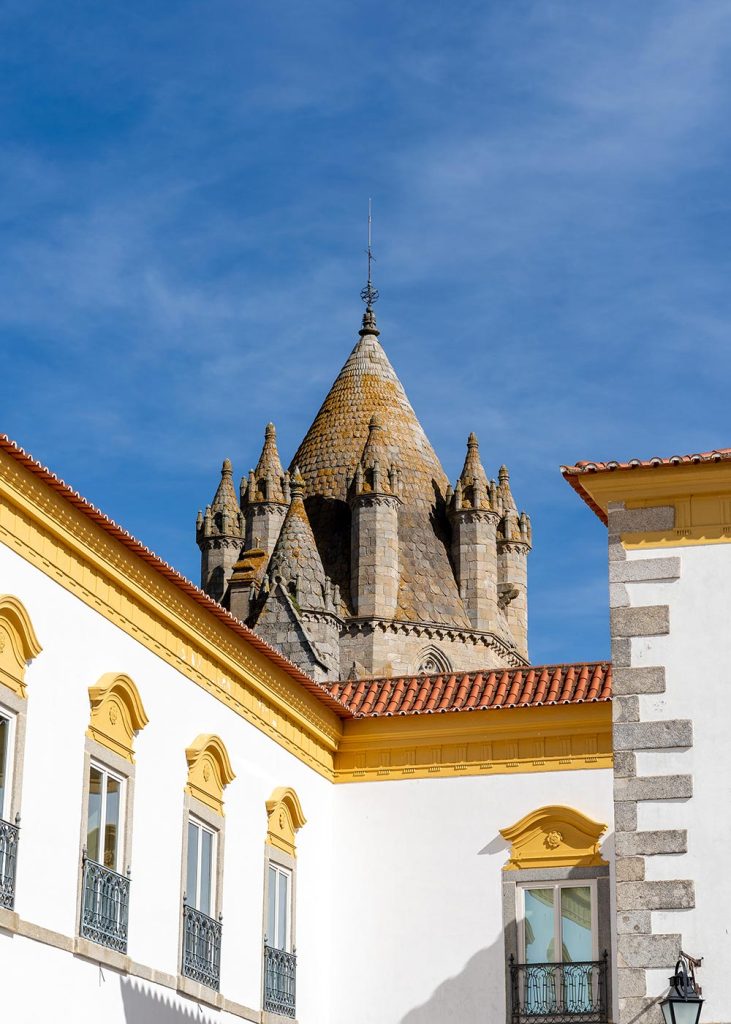

Within the huge cathedral you’ll also find a spectacular Renaissance-era pipe organ, which is sometimes used in concerts.
Take a walking tour of Évora


If you’re short on time and hungry for knowledge, a guided walking tour is the best way to see Évora. The main sights of are within walking distance, and a talented guide can bring the story of each to life. This quick 2.5-hour tour ticks off the three sights I’ve just mentioned, while this three-hour tour goes more in-depth with extra stops.
Relax in Praça do Giraldo
Évora’s main square, Praça do Giraldo, is the heart of the old city centre. On any sunny afternoon you’ll find café tables sprawled across the huge plaza with locals and visitors enjoying coffee or aperitivo hour.
It wasn’t always so relaxed here. The square is named after Geraldo Geraldes, or Geraldo the Fearless. In 1167 he conquered Évora, taking it from the Moors. The symbol of the city – the shield of Évora – actually features Geraldo on a horse with a bloodied sword and two Moorish heads below him. Intense!
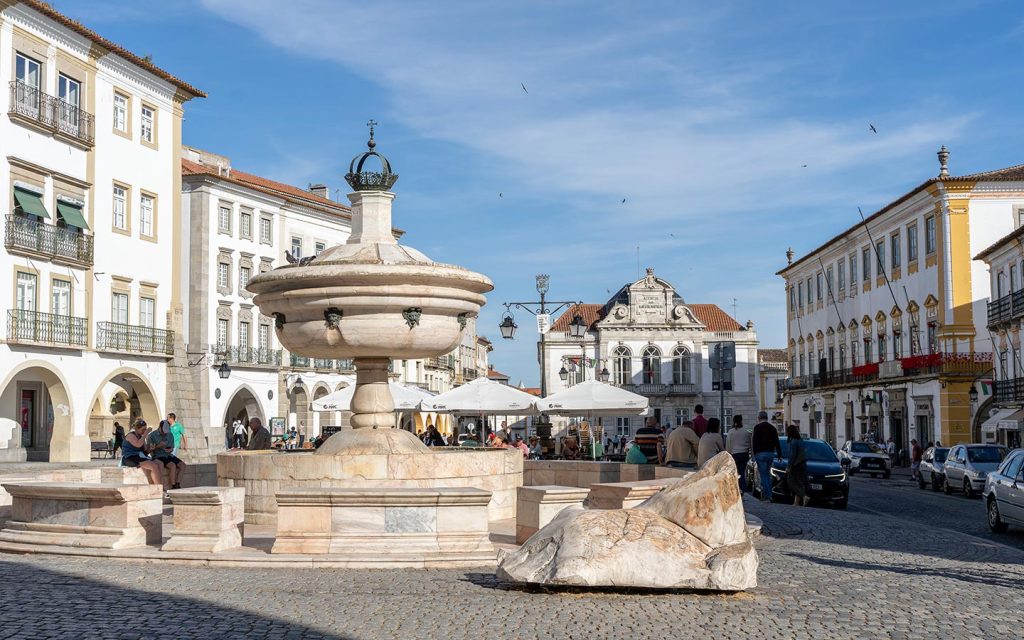
In the centre of Giraldo Square is a huge marble fountain, which connects to the ancient aqueduct. It’s close to Igreja de Santo Antão, one of Évora’s most important churches. If the doors are open, slip inside to admire a marble altar, 17th-century tiles, and other details. Also on the square you’ll find the tourism office.
Visit the Évora Museum (and other museums)
Within the halls of a former archbishop’s palace you’ll find the Évora Museum (which is officially called the Frei Manuel do Cenáculo National Museum). Here Roman sculptures sit alongside Visigothic and medieval artefacts, and Portuguese and Flemish paintings.
Évora has a handful of other museums to pop on your list too. The nearby Forum Eugénio de Almeida and Palácio dos Duques de Cadaval (Cadaval Palace) sometimes host special exhibitions. Or you could visit the permanent collections at the Museu de Arte Sacra da Sé de Évora (Sacred Art Museum) within the cathedral; go back in time at the Museu das Carruagens (Carriage Museum); or literally explore time at the Museu do Relógio (Watch Museum).
Sample Évora’s specialty convent sweets


Every town and village in Portugal seems to have historic sweet recipes that come from the local convent. While Lisbon has the pastel de nata, Évora has a handful of local treats and sweets to try – with a few more imported from nearby Alentejo towns.
- Queijadas de Évora – small cheesecakes. A thin dough filled with a paste of eggs and fresh sheep’s cheese.
- Påo de rala – cake made with sugar, almonds and egg yolks, and stuffed with sweet egg floss, squash jam and lemon zest.
- Queijinho do ceu – the name means “little cheese from heaven”. This is a gluten-free sweet almond dough stuffed with sweet egg custard.
- Encharcada do Convento de Santa Clara – one of those classic Portuguese dessert recipes that calls for two dozen egg yolks! This consists of threads of egg yolk cooked in simple syrup, piled into a dish, and finally the top is blow torched.
- Serica or Cerica or Sericaia – a fluffy soufflé-like sponge cake cooked in a huge terracotta dish. It gets topped with green plums soaked in syrup from Elvas.
The best place to try most of these is Pastelaria Conventual Pão de Rala, which besides baking the best doces conventuais (convent sweets) in Évora, it also has beautiful tiled interiors with hand-painted blue-and-white azulejos.
Read next…. Where to eat in Évora: Best Restaurants, Cafés & Sweets
Visit the many churches of Évora

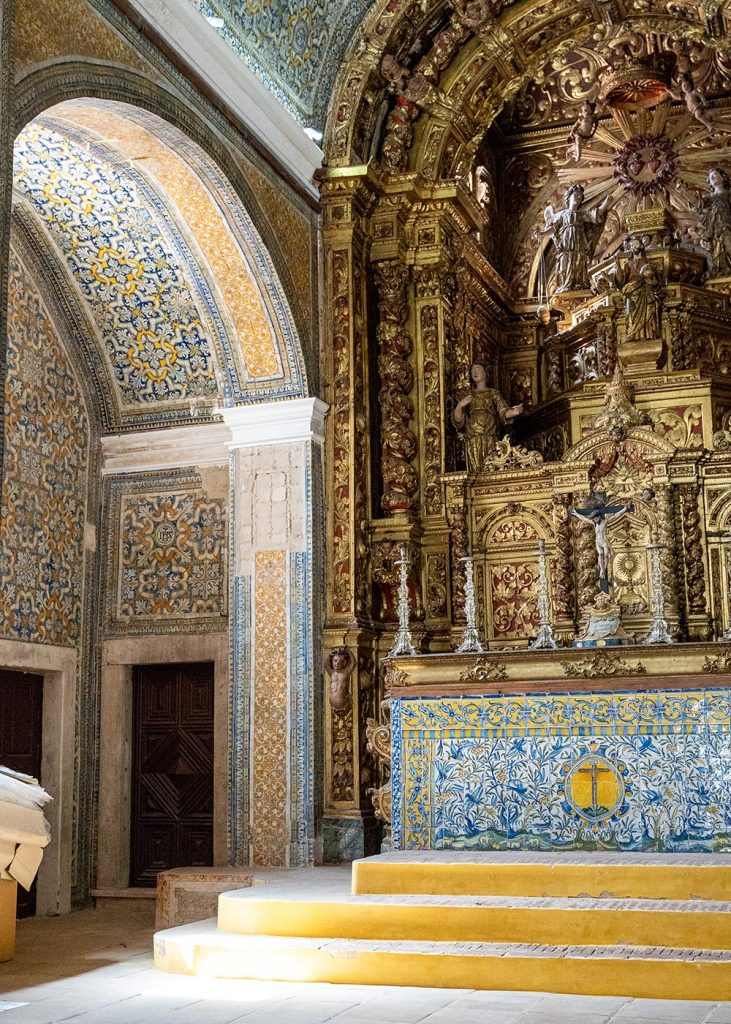
In the 15th century Portugal’s king started living in Évora on a more regular basis, bringing importance to the small city. It kicked off a golden age, with convents and royal palaces popping up within the old centre. Around that time the Santa Clara Convent, the São Francisco Convent, Igreja da Misericórdia, and Os Lóios Convent with the São João Evangelista Church were built.
I always think it’s worth popping your head inside any church to admire the treasures within – the Igreja da Misericórdia has beautiful tiles and a gold altar from the early 1700s.
If you’re interested in exploring Évora’s churches more in-depth, this Christian Heritage walking tour dives deeper into the city’s many churches, taking you on a walking tour of the main sights with many churches.
Soak in a Roman bath at In Acqua Veritas
Fast forward a few thousand years to when the Romans were in Portugal. Their bathing culture is well known, and Termas Romanas de Évora or Roman baths have been found in the city. The ancient ones beneath city hall are currently being remodelled, but you can enjoy some spa time – Roman style – at In Acqua Veritas, where they try to recreate the atmosphere of ancient Roman bathing rituals with a touch of luxury.
Get lost in Évora’s winding streets


Maybe my favourite thing to do in Évora is simply get lost. As mentioned, the old town is mostly encircled by ancient walls, and within is a labyrinth of cobblestone streets and white-washed homes trimmed with Alentejo yellow paint. If you’re interested in photography, you’ll love wandering little streets, meeting local cats and finding a new perfect shot every five metres.
Read next… 48 hours in Monsaraz
Tour the cork forests
Just beyond the borders of Évora lies the Alentejo, a region that takes up around a third of Portugal’s land mass. Much of this is rural and arid land, where old cork tree forests grow and animals – from black pigs to sheep to cows – roam beneath.
Discover the world of cork with a local guide who will take you out into the forest on a special cork walk or in a jeep. You’ll visit a sixth-generation 1,400-acre family estate to find out how they sustainably manage the cork forest as a farm.
Explore the halls of Évora University
Évora’s University of the Holy Spirit was founded in 1559 as a Jesuit college, making the Alentejo capital Portugal’s second city at the time. The college, with its Renaissance cloister and classrooms with baroque tiles, was expanded in the mid-1700s before the expulsion of Jesuits from Portugal in 1759.
The university closed down in 1779, reopening almost 200 years later in the 1970s. Now it’s known as Universidade de Évora and you can pay a small fee to explore the historic grounds of Portugal’s second-oldest university.
Taste local Alentejo wines

The warm climate of the Alentejo produces rich and tannin-heavy red wines, which you can taste at cellar doors within Évora – or join a wine tour to visit nearby estates. Within the city, you can drop by Enoteca Cartuxa or Ervideira.
For a guided experience that takes you into the countryside, join this small-group wine tasting tour. It also stops in the nearby village of Arraiolos, which is famous for its artisan rug weaving. Or this excellent full-day tour that combines time exploring medieval Monsaraz village with a stop at Corval, the pottery village, and a local winery.
Read next… Made in Portugal: Where to shop for Portuguese ceramics
Go shopping for artisanal goods in Évora
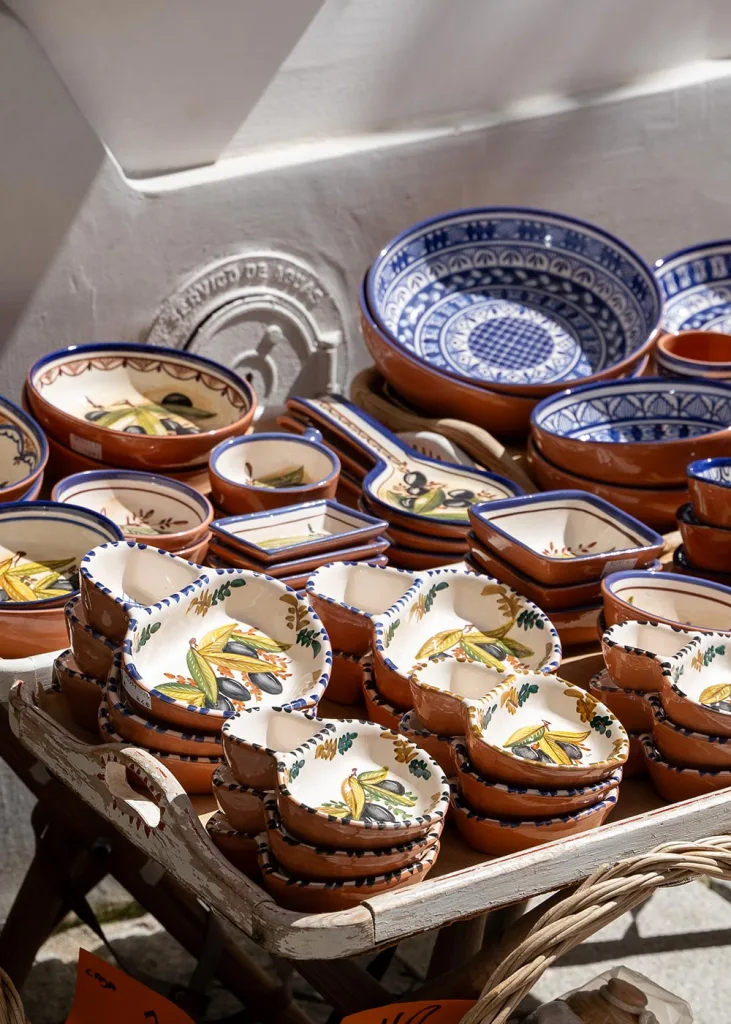
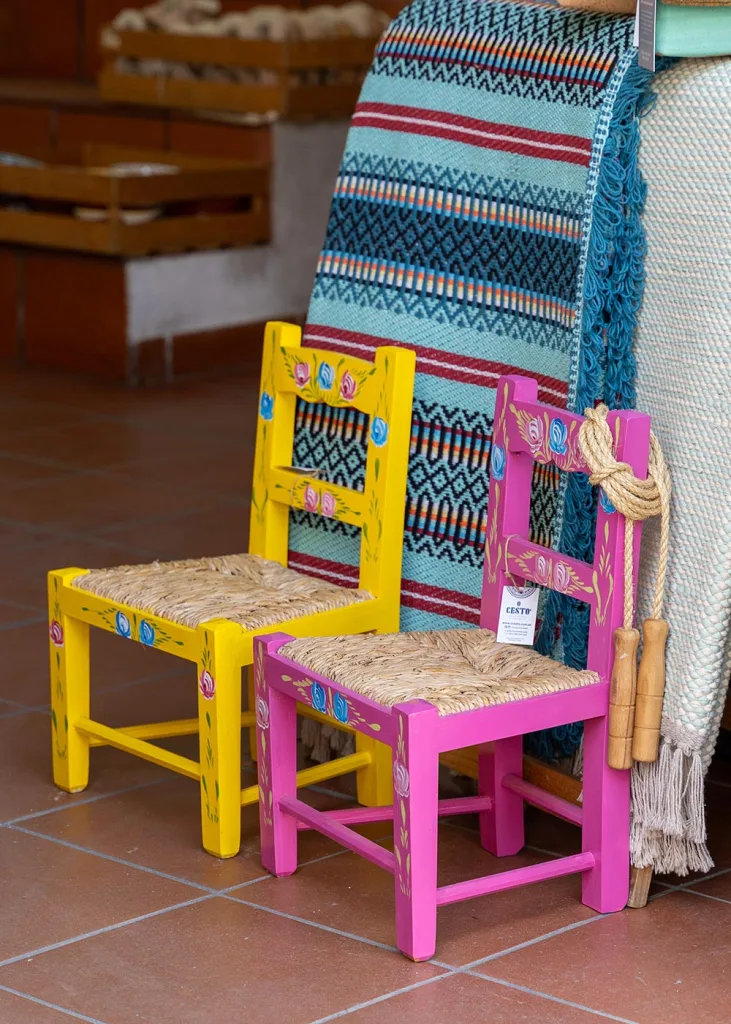
The Alentejo has a rich heritage of terracotta pottery, wool capotes (coats), cork products, folk-art painted furniture, rugs, wine and more. You can shop all these beautiful artisanal crafts in Évora, the Alentejo capital. I’ve drafted up an article covering the city’s fantastic historic shops, chic boutiques, and made-in-Portugal souvenir stores. Here are the addresses to seek out next time you’re in Évora.
Read next… Where to Shop in Évora: Artisans & Boutiques
Visit Almendres, a megalithic site older than Stonehenge
A few kilometres outside Évora lies the Cromlech of the Almendres, a megalithic complex that dates back to 7,000 years ago. Yep, think about that for a second. This stone circle – while less monumental in size – predates the sacred site of Stonehenge by more than 2,000 years.
Have a local guide bring the rocks to life on a guided hike through the Serra de Valverde to the Almendres megalithic monument. You’ll also visit Castelo do Geraldo, learn about the legendary Gerald the Fearless, and explore the Almendres Interpretive Centre. Almendres is one of a handful of prehistoric monuments that you’ll find in the area.
Chase art at the Palácio Duques de Cadaval
In the hands of the Cadaval family for more than 600 years, the impressive Palácio Duques de Cadaval next to the Roman Temple is one of the top things to do in Évora. This palace often holds big art exhibitions, and with the city set to become the European Capital of Culture in 2027, I expect to see more taking over the renovated 14th-century. In the courtyard of the palace you can also find a brilliant restaurant, Cavalariça.
Don’t miss the church, Igreja dos Lóios, next door with its huge panels of blue-and-white azulejo tiles from 1711. Built by the Cadaval family in 1485, it has been voted Portugal’s most beautiful private church.
Meet peacocks in the park and see the Royal Palace


Évora’s most beautiful garden, the Jardim Público de Évora (Public Garden), is located close to the Chapel of Bone. Within you’ll find a quiosque (kiosk) to grab snacks, plenty of shade, plenty of peacocks, and what remains of the former royal palace – or Dom Manuel Palace.
At the heart of the garden lies the 16th-century Queen’s Gallery, which mixes Renaissance, Gothic, and Manueline architecture. The windows on the outside are so pretty! The space has been restored and turned into a museum with the history of Évora.


Admire the houses in Évora’s aqueduct
On the way in or out of Évora you’ll likely spot the ancient Agua de Prata Aqueduct, 18 kilometres (11 miles) built between 1532-1537 to bring water into the city. It’s thought the gravity-fed aqueduct was built over an older Roman one.
Nowadays you can follow the Percurso da Água de Prata (Agua de Prata Trail) on foot or by bike, tracing the aqueduct for around 8 kilometres (5 miles) via cork forests and farms. Drop by the tourism office in Praça do Giraldo for a map.
Within the old town, I like wandering around where tiny houses have been built within the arches!
For an unusual stay, the M’ar de Ar Aqueduto hotel has amazing views of the Agua de Prata Aqueduct.
See the Alentejo from above in a hot air balloon
There’s nothing quite like floating above beautiful landscapes in the peaceful calm of the early morning. Watch the sunrise from the basket of a hot air balloon and witness the landscape wake. Balonissimo will take you close to Monsaraz, a medieval hilltop village next to the expansive Alqueva Lake, where you’ll launch into the sky. After, enjoy a Champagne toast!
In winter, there may be sunset rides too – perfect for those who hate early mornings!
Find the best restaurants in Évora


The Alentejo is my favourite Portuguese region to eat in. And in Évora, the regional capital, you can tuck in to the best examples of humble and hearty Alentejo dishes made with wild asparagus, black pork and local herbs. Here is a list of everywhere I suggest you eat while in the small city of Évora.
Read next: Where to eat in Évora: Best Restaurants, Cafés & Sweets
Need help planning your trip to Evora? ✨ Book a one-on-one video call with Daniela and get custom help organising your perfect Portugal itinerary. Find out more here.
Where to stay in Évora: best hotels and guesthouses


You can stay anywhere in the old city centre of Évora and be within walking distance of the top sights and best restaurants, tascas, or sweet shops. Évora is fairly flat, so it’s easy to navigate – it is filled with cobblestone streets that may be tricky to traverse if you have mobility issues.
Top suggestions within Évora’s historic centre:
- M’ar de Ar Aqueduto – 5-star, aqueduct views!
- Hotel Albergaria do Calvário – 4-star, historic
- Évora Olive Hotel – 4-star, modern
- Templo Boutique Hotel – guesthouse
Top suggestions outside Évora:
- Convento do Espinheiro – 5-star historic hotel
- A Casa do Governador – luxury guesthouse
- Octant Évora – 4-star estate
What is Évora famous for?
Évora is famous for being a museum city with a long history – stretching back to the Romans. Évora’s golden age happened in the 16th century when Portugal’s kings lived in the small inland city. Evidence of past riches are found in the city’s squares, which are lined with opulent churches, palaces, and monuments.

Is Évora worth visiting?
Absolutely! Beyond all the rich history, Évora is one of the prettiest towns in Portugal. Every cobblestone street is asking to be photographed (or sketched).

How long to spend in Évora?
You can tick off all the sights in a day, but the Alentejo is a place to slow down, relax and enjoy life. Two days in Évora would be perfect, or you could spend a week here and use Évora as your base to explore nearby towns and sights – like Monsaraz, Estremoz, Arraiolos, prehistoric sights, olive farms, cork forests, and more.
Interesting things to see near Évora
If you venture beyond the city limits you’ll find prehistoric monuments, medieval villages like Monsaraz, other cute whitewashed towns, and endless fields of cork trees, olive groves, and vineyards. You could easily spend a week slowly exploring the Alentejo region, with something new to do each day.


Best day trips from Évora
Évora is a fantastic base for exploring the Alentejo region. From here you can go wine tasting, visit megalithic sites, explore UNESCO World Heritage-listed villages, explore olive oil, and learn about cork forests.
This great day trip takes you to medieval Monsaraz, Corval pottery village and wine tasting. This experience explores the marble mines near Vila Viçosa, or this one takes you horseback riding on the golden sands of Comporta Beach.
That’s a complete list of the best things to do and top sightseeing attractions in Évora. If you’re planning a trip, leave a comment! It makes my day 🙂
Keep reading…
- Where to eat in Évora: The Best Restaurants, Cafés & Sweets
- 22 most beautiful castles in Portugal
- 48 hours in Monsaraz
- Portugal’s pottery village: Why you should visit São Pedro do Corval
- The best things to do in Estremoz
- A strange whistle in the street? That’s Portugal’s travelling knife-sharpener – the amolador
- 6 Best Food Markets in Portugal
- Portugal Road Trip: Where to stop between Lisbon and Lagos, Algarve


